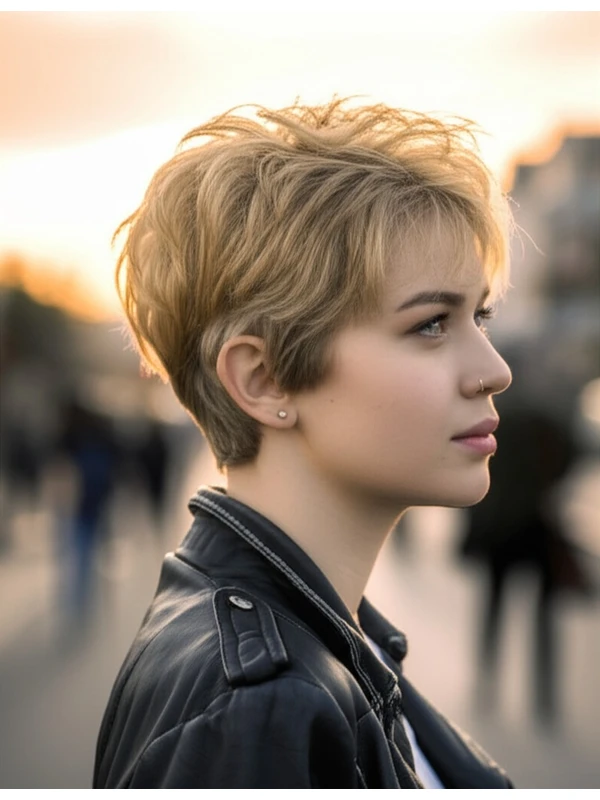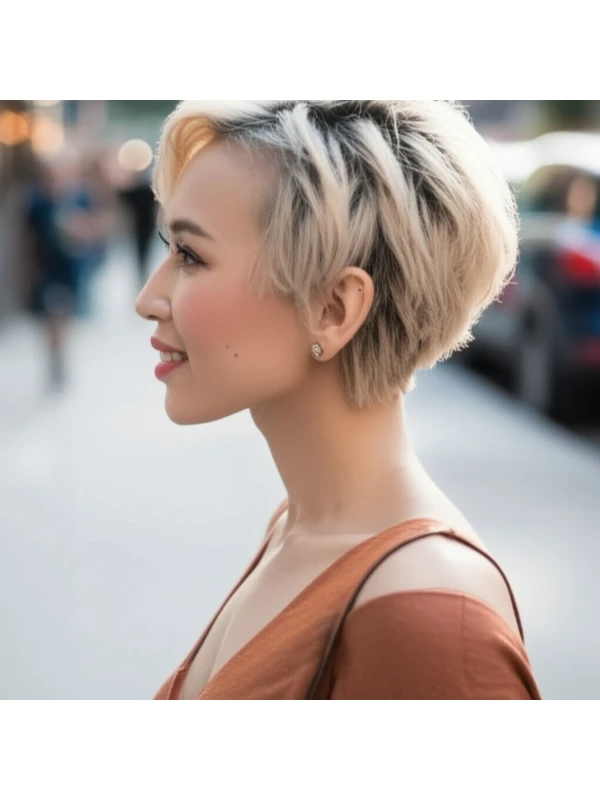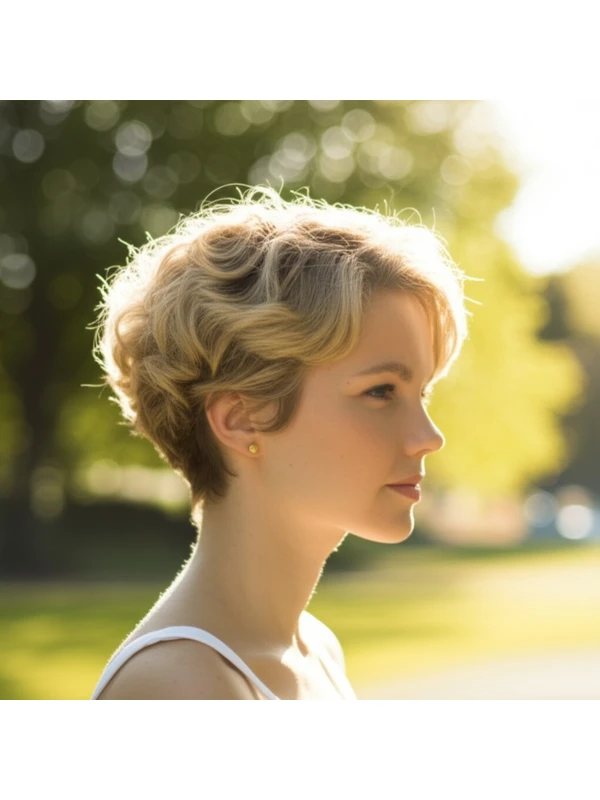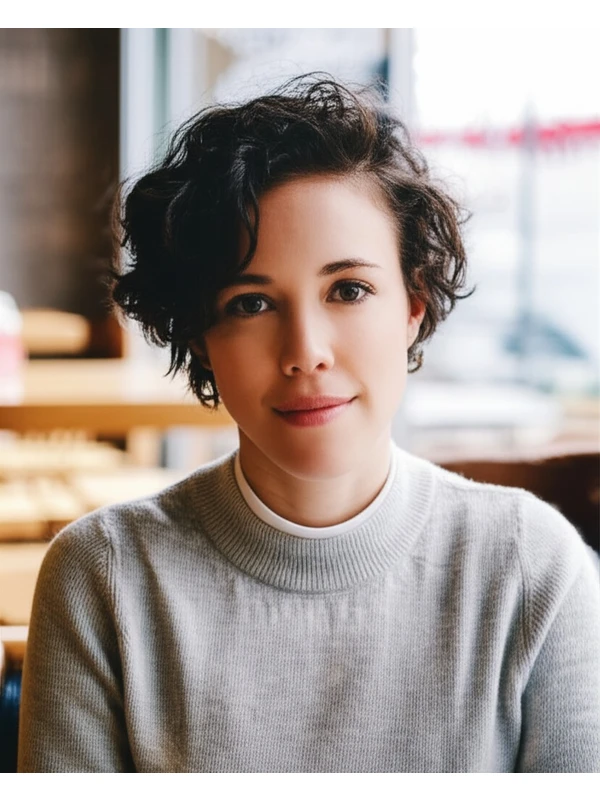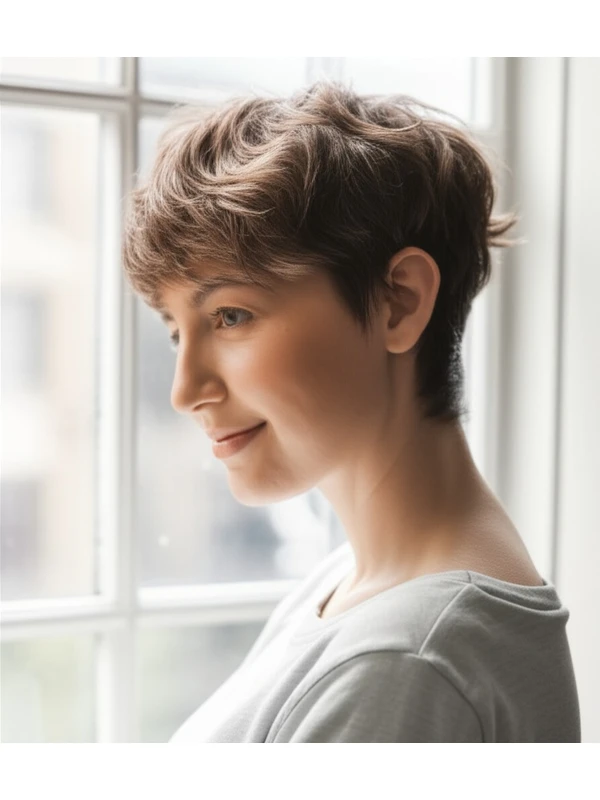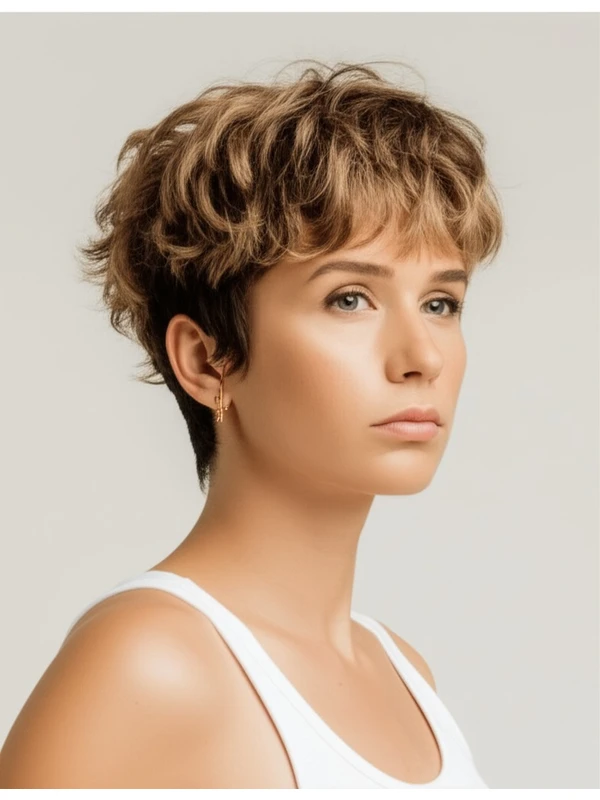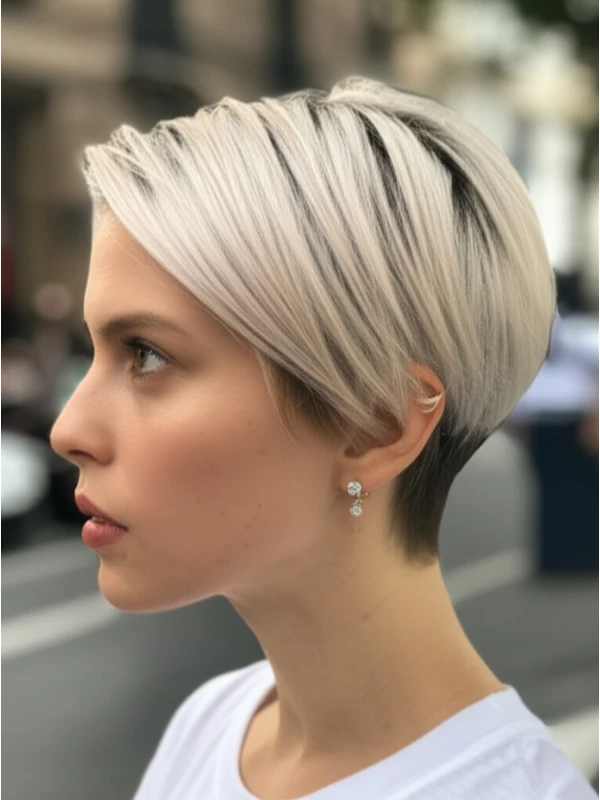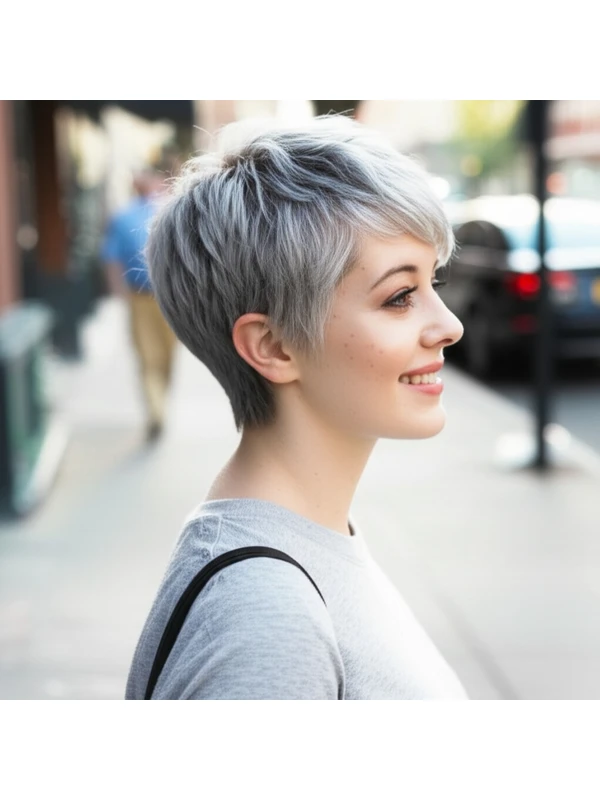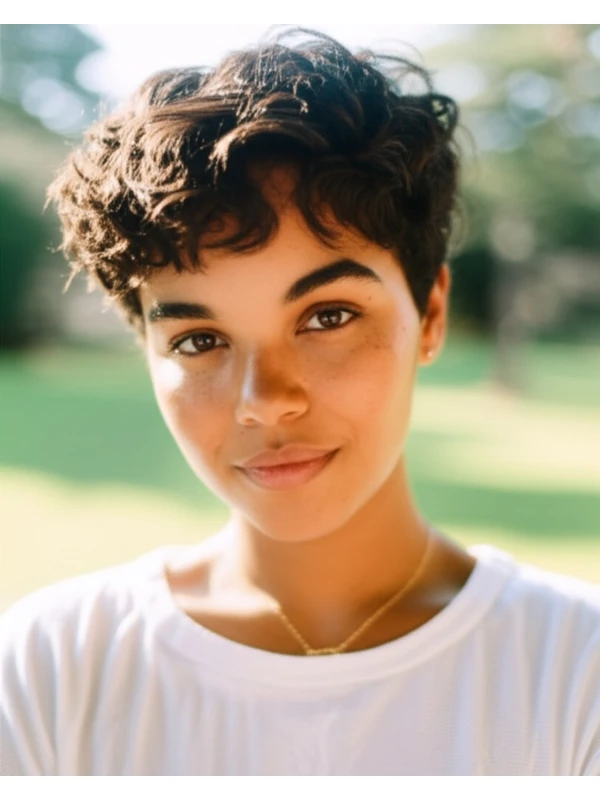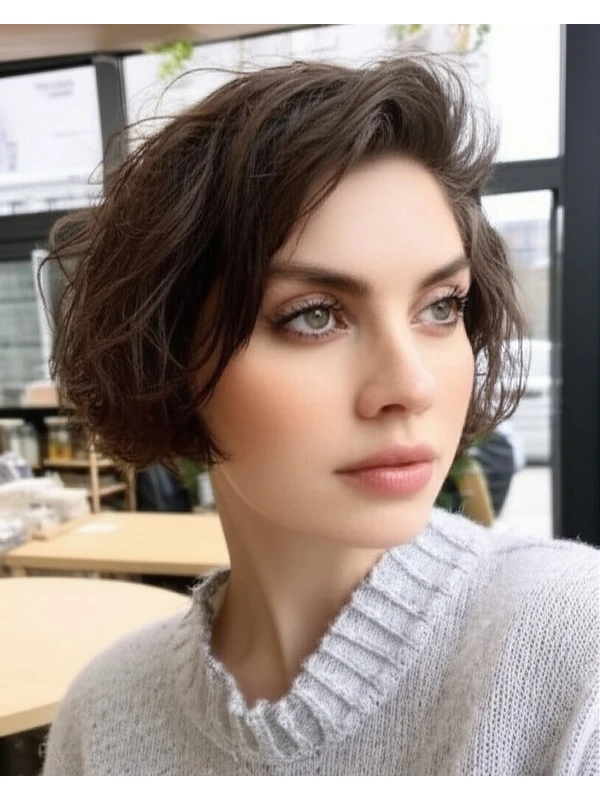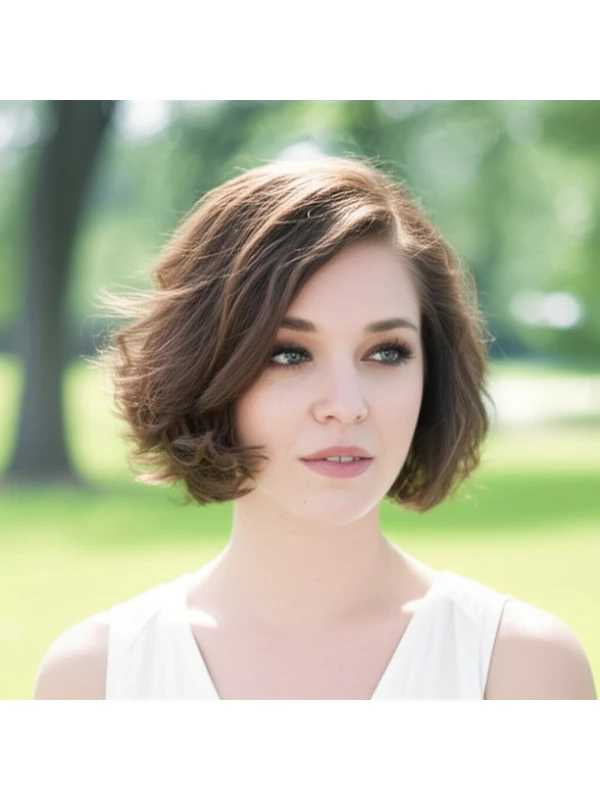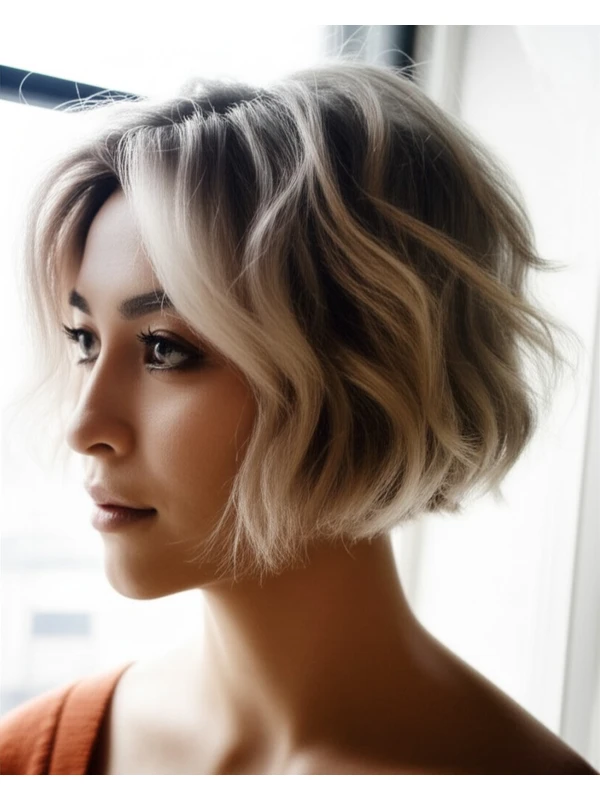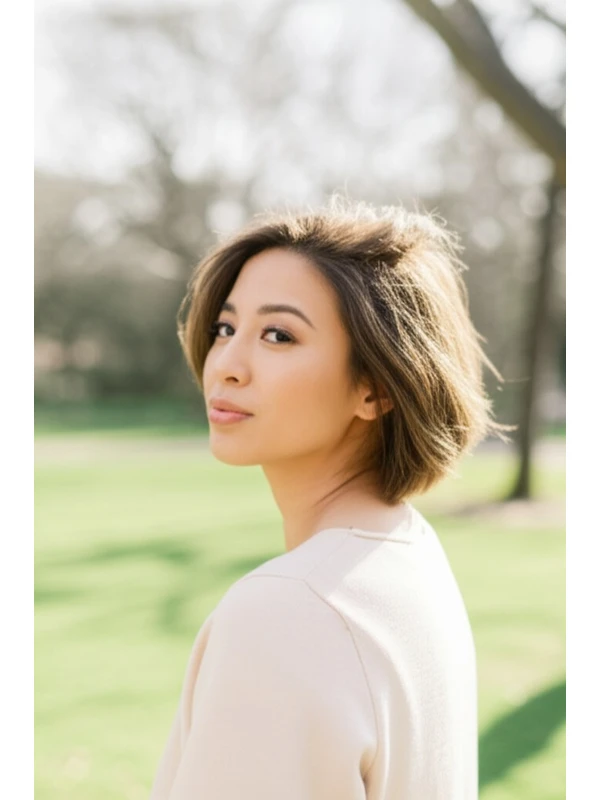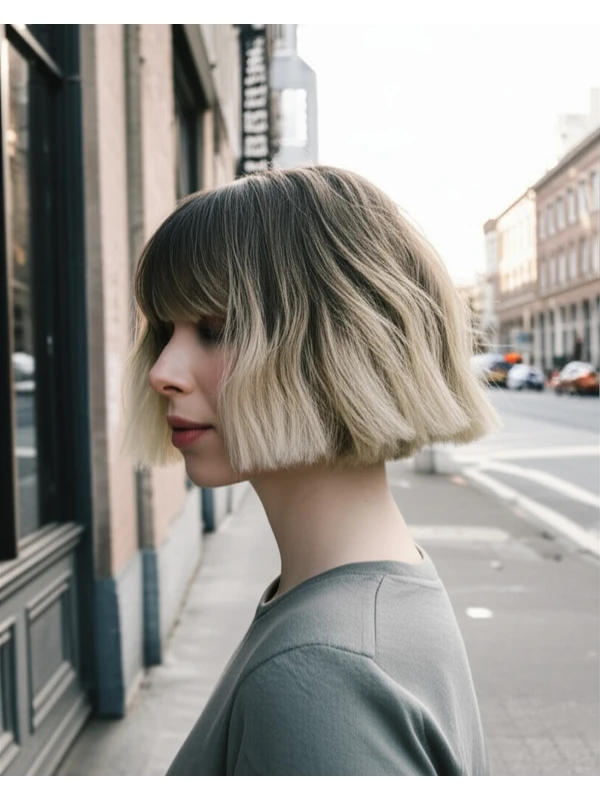#The Pixie Bob: A Bold & Beautiful Style Guide
The pixie bob is a modern classic – playful, chic, and surprisingly versatile. It’s more than just a short haircut; it's a statement! This guide will walk you through everything you need to know about rocking this confident style, from finding the perfect fit for your face shape to keeping it looking fresh between salon visits.
#1) Background & Definition: What is a Pixie Bob?
The pixie bob combines elements of the classic pixie cut (short layers all around) with the softer lines and slightly longer length of a bob. Think of it as a playful blend – shorter in the back and sides, gradually lengthening towards the front, often framing the face beautifully.
Key Features:
- Asymmetrical or Rounded Shape: Can be sharply angled for an edgy look or softly rounded for more softness.
- Layered Texture: Layers add movement and volume – crucial for avoiding a flat, helmet-like appearance.
- Face Framing: The front pieces are often styled to highlight your best features.
Typical Length Ranges: 1–4 inches long (2.5 - 10 cm) all around. This is subjective; "long" in the back might be slightly longer than “short” in the front.
Alternative Names: Pixie Cut with a Bob Shape, Textured Pixie Bob, Layered Short Bob.
#2) Face Shape Fit: Finding Your Perfect Balance
The pixie bob can work for almost any face shape, but adjustments are key! Here's how to make it shine:
- Oval Faces: Lucky you! Most variations of the pixie bob look fantastic on oval faces. Embrace asymmetry and volume at the crown. A side-swept fringe adds extra polish.
- Round Faces: Aim for height and angles. Avoid blunt, rounded bobs that can emphasize roundness. A slightly longer front with layers or a wispy, angled fringe will create definition.
- Square Faces: Soften the strong jawline with layered pieces around the cheekbones and chin. A side part is essential to break up the symmetry. Avoid blunt bangs which accentuate angles.
- Heart-Shaped Faces: Balance a wider forehead with a textured fringe or layers that fall just above the eyebrows. Keep the sides relatively short to avoid adding width.
- Diamond Faces: The pixie bob highlights your cheekbones! A side part and soft, face-framing layers will enhance this feature. A longer fringe can also soften angles.
- Oblong (Long) Faces: Avoid styles that make your face appear even longer. Opt for a slightly more voluminous pixie bob with shorter sides to create width. A full fringe or curtain bangs can help shorten the appearance of the face.
#3) Body Proportions & Height Guidance: Silhouette Harmony
The pixie bob isn’t just about your face; it impacts how you're perceived overall!
- Petite: Shorter, more cropped versions look incredibly chic and don’t overwhelm a smaller frame.
- Average Height: Almost any length works – experiment with different volumes to find what flatters you most.
- Tall: Longer pixie bobs (closer to 4 inches) can balance your height effectively. Consider extra volume at the crown for added impact.
- Narrow Shoulders: Volume on top creates the illusion of broader shoulders. Layering is key!
- Broad Shoulders: Keep the sides relatively close to the head to avoid widening the shoulder line further.
- Short Neck: A shorter pixie bob with a slightly elevated crown will elongate your neck visually. Avoid overly long front pieces that can emphasize a short neck.
- Long Neck: Longer styles and more volume in the front will help fill out the space between your chin and shoulders, creating balance.
#4) Works Best With Hair Types & Densities: Texture Matters!
The pixie bob adapts beautifully to various hair types but requires different approaches:
- Straight Hair: Easy to style into sleek or textured looks. Product is key for hold and definition.
- Wavy Hair: Layers are your best friend! Embrace the natural wave with texturizing products.
- Curly/Coily Hair: The pixie bob can be stunning, but shrinkage needs careful consideration. Communicate desired length to your stylist after accounting for shrinkage (coils typically shrink 50-75%, waves around 25-40%). A shorter cut will ensure the style doesn't end up too long once dry.
- Fine Hair: Layers add volume, but be careful not to overdo it – too many layers can make hair look even thinner. Use volumizing products at the roots.
- Medium Density: The pixie bob works well with medium density hair; layering will provide shape and movement.
- Thick Hair: Thinning shears (ask your stylist!) can remove bulk while maintaining volume.
#5) Styling Variations: From Casual to Chic
The beauty of the pixie bob is its versatility!
- Sleek vs. Textured: Sleek styles use smoothing serums and a flat iron for a polished look. Texturized looks embrace natural texture with sea salt sprays or texturizing creams.
- Middle vs. Side Part: A middle part creates symmetry, while a side part adds softness and asymmetry.
- Fringe Variations: Blunt bangs, wispy bangs, curtain bangs – the possibilities are endless! Consider your face shape when choosing a fringe style.
- Occasion Styling: For work: Sleek and polished with minimal styling time. For evenings: Add texture, volume, or even decorative hair accessories.
#6) Maintenance: Keeping it Fresh
- Trim Cadence: Every 4-8 weeks (depending on growth rate and desired shape).
- At-Home Routine: Gentle shampooing, hydrating conditioner (especially for dry or curly hair), leave-in treatment to control frizz.
- Heat vs. Air Dry: Minimize heat styling whenever possible. When using heat, always use a protectant spray.
- Product Checklist:
- Shampoo & Conditioner: Tailored to your hair type.
- Leave-In Conditioner: For moisture and detangling.
- Styling Cream/Pomade: For texture and hold (choose based on desired style).
- Hairspray: Light or medium hold for finishing.
- Estimated Daily Styling Time: 5–15 minutes, depending on your styling skills and desired look.
#7) Grow-Out Roadmap: Evolving Your Style
- Months 1-3: The shape is most defined. Maintain regular trims to preserve the style.
- Months 3-6: The front pieces begin to lengthen. Consider softening the fringe or adding more layers for a softer transition. Talk with your stylist about how to blend any new growth into the existing cut.
- Beyond 6 Months: You can either maintain the pixie bob length, gradually grow it out into a longer bob, or transition to an entirely different style.
#8) Color Pairings: Enhancing Your Pixie Bob
- Cool Undertones (Pink, Blue): Icy blondes, ash browns, and even subtle lilac hues look stunning.
- Warm Undertones (Gold, Yellow): Honey blondes, caramel highlights, or copper tones will complement your skin beautifully.
- Low-Commitment Options: Balayage or babylights add dimension without a harsh root line. Root shadows can also create the illusion of depth.
#9) Season & Occasion Guide: Styling for Every Moment
- Spring/Summer: Embrace lighter, brighter colors and textured styles that feel fresh and airy.
- Fall/Winter: Richer tones (like chocolate brown or auburn) add warmth and sophistication. Sleek, polished looks are perfect for cooler weather.
- Work: A neat, professional style with minimal fuss is ideal.
- Weddings/Parties: Experiment with volume, texture, and decorative accessories to create a show-stopping look.
- Formal Events: Consider adding sleekness or an elegant updo for a more polished appearance.
#10) Cost & Time: Investment in Style
- Salon Time: Typically 45 minutes – 2 hours, depending on complexity and stylist expertise.
- Price Range: Expect to pay significantly more than a basic trim - costs can range from moderately expensive to quite high, based on your area and salon’s pricing structure.
#11) Pros & Cons: Weighing the Options
Pros:
- Chic and modern look.
- Easy to style (with practice).
- Can be adapted to many face shapes and hair types.
- Highlights facial features.
Cons:
- Requires regular trims for maintenance.
- Can be a significant commitment if you’re used to longer hair.
- Styling can take time initially until you master the techniques.
#12) Salon Consultation Script: Your Checklist
Before your appointment, consider asking these questions:
- "I'm interested in a pixie bob. Can we discuss options for my face shape [mention your face shape]?"
- “Can you show me examples of pixie bobs on people with my hair texture and density?”
- “How much volume do you think I need at the crown to balance my features/body proportions?”
- "What styling products would you recommend for maintaining this style, given my hair type?"
- "Can we discuss a grow-out plan so that I can transition into something else if I want to later on?"
#FAQs: Your Burning Questions Answered
- Is the pixie bob suitable for fine hair? Yes! Layers add volume and create the illusion of thickness, but be mindful not to overdo it.
- Can a coily/kinky textured hair rock this style? Absolutely! Just ensure your stylist understands shrinkage and cuts accordingly.
- How much does it cost to maintain with color treatments? This varies widely depending on the desired effect, but factor in extra for root touch-ups or full color applications.
- Can I do my own trims at home? While minor shaping can be done, professional trims are essential to preserve the overall shape and prevent a messy look.
- What if I hate it after getting it cut? Communicate your concerns immediately! A skilled stylist can often adjust the style with some tweaks.
- How long will my hair need to grow out before I can change my mind? It takes roughly 3-6 months for a significant length, so be prepared for that transition period!
